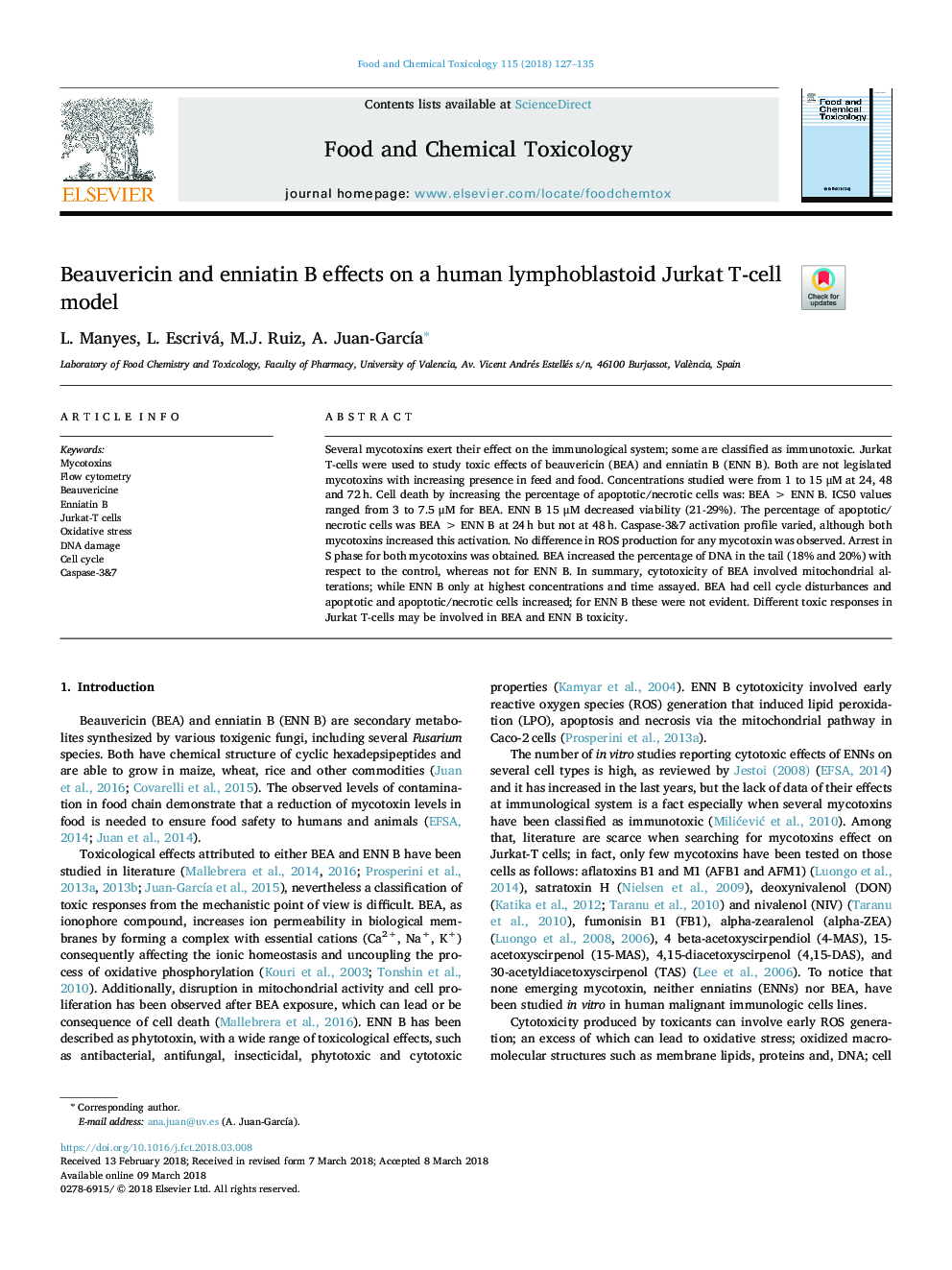| Article ID | Journal | Published Year | Pages | File Type |
|---|---|---|---|---|
| 8547413 | Food and Chemical Toxicology | 2018 | 9 Pages |
Abstract
Several mycotoxins exert their effect on the immunological system; some are classified as immunotoxic. Jurkat T-cells were used to study toxic effects of beauvericin (BEA) and enniatin B (ENN B). Both are not legislated mycotoxins with increasing presence in feed and food. Concentrations studied were from 1 to 15 μM at 24, 48 and 72â¯h. Cell death by increasing the percentage of apoptotic/necrotic cells was: BEAâ¯>â¯ENN B. IC50 values ranged from 3 to 7.5 μM for BEA. ENN B 15 μM decreased viability (21-29%). The percentage of apoptotic/necrotic cells was BEAâ¯>â¯ENN B at 24â¯h but not at 48â¯h. Caspase-3&7 activation profile varied, although both mycotoxins increased this activation. No difference in ROS production for any mycotoxin was observed. Arrest in S phase for both mycotoxins was obtained. BEA increased the percentage of DNA in the tail (18% and 20%) with respect to the control, whereas not for ENN B. In summary, cytotoxicity of BEA involved mitochondrial alterations; while ENN B only at highest concentrations and time assayed. BEA had cell cycle disturbances and apoptotic and apoptotic/necrotic cells increased; for ENN B these were not evident. Different toxic responses in Jurkat T-cells may be involved in BEA and ENN B toxicity.
Related Topics
Life Sciences
Agricultural and Biological Sciences
Food Science
Authors
L. Manyes, L. Escrivá, M.J. Ruiz, A. Juan-GarcÃa,
